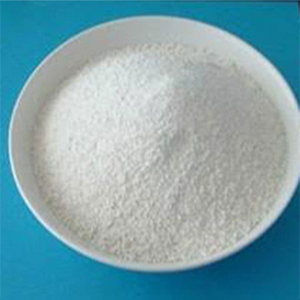
Calcium Citrate USP Grade
C12H10Ca3O14-4H2O 570.49
1,2,3-Propanetricarboxylic acid, 2-hydroxy-, calcium salt (2:3), tetrahydrate.
Calcium citrate (3:2), tetrahydrate [5785-44-4].
Calcium Citrate contains four molecules of water of hydration. When dried at 150 to constant weight, it contains not less than 97.5 percent and not more than 100.5 percent of Ca3(C6H5O7)2.
Identification—
A: Dissolve 0.5 g in a mixture of 10 mL of water and 2.5 mL of 2 N nitric acid. Add 1 mL of mercuric sulfate TS, heat to boiling, and add 1 mL of potassium permanganate TS: a white precipitate is formed.
B: Ignite completely 0.5 g at as low a temperature as possible, cool, and dissolve the residue in a mixture of 10 mL of water and 1 mL of glacial acetic acid. Filter, and add 10 mL of ammonium oxalate TS to the filtrate: a voluminous white precipitate is formed, and it is soluble in hydrochloric acid.
Loss on drying: Dry it at 150 for 4 hours: it loses between 10.0% and 13.3% of its weight.
Arsenic: the limit is 3 µg per g.
Limit of fluoride: the limit is 0.003%.
Limit of acid-insoluble substances: Dissolve 5 g by heating with a mixture of 10 mL of hydrochloric acid and 50 mL of water for 30 minutes: the residue so obtained, filtered, washed, and dried at 105 for 2 hours, weighs not more than 10 mg (0.2%).
Lead: the limit is 0.001%.
Heavy metals: the limit is 0.002%.
Calcium Citrate FCC Food Grade
Tricalcium Citrate
CH2(COO)C(OH)(COO)CH2COO2Ca3
Ca3(C6H5O7)2·4H2O Formula wt 570.50
INS: 333 CAS: [5785-44-4]
DESCRIPTION
Calcium Citrate occurs as a fine, white powder. It is very slightly soluble in water, but it is insoluble in alcohol.
REQUIREMENTS
Identification:
A. Dissolve 500 mg of sample in 10 mL of water and 2.5 mL of 1.7 N nitric acid, add 1 mL of mercuric sulfate TS, heat to boiling, and then add potassium permanganate TS. A white precipitate forms.
B. Completely ignite 500 mg of sample at as low a temperature as possible, cool, and dissolve the residue in a mixture of 10 mL of water and 1 mL of glacial acetic acid. Filter, and add 10 mL of ammonium oxalate TS to the filtrate. A voluminous, white precipitate forms that is soluble in hydrochloric acid.
Assay: Not less than 97.5% and not more than 100.5% of Ca3(C6H5O7)2 after drying.
Fluoride: Not more than 0.003%.
Lead: Not more than 2 mg/kg.
Loss on Drying: Between 10.0% and 14.0%.